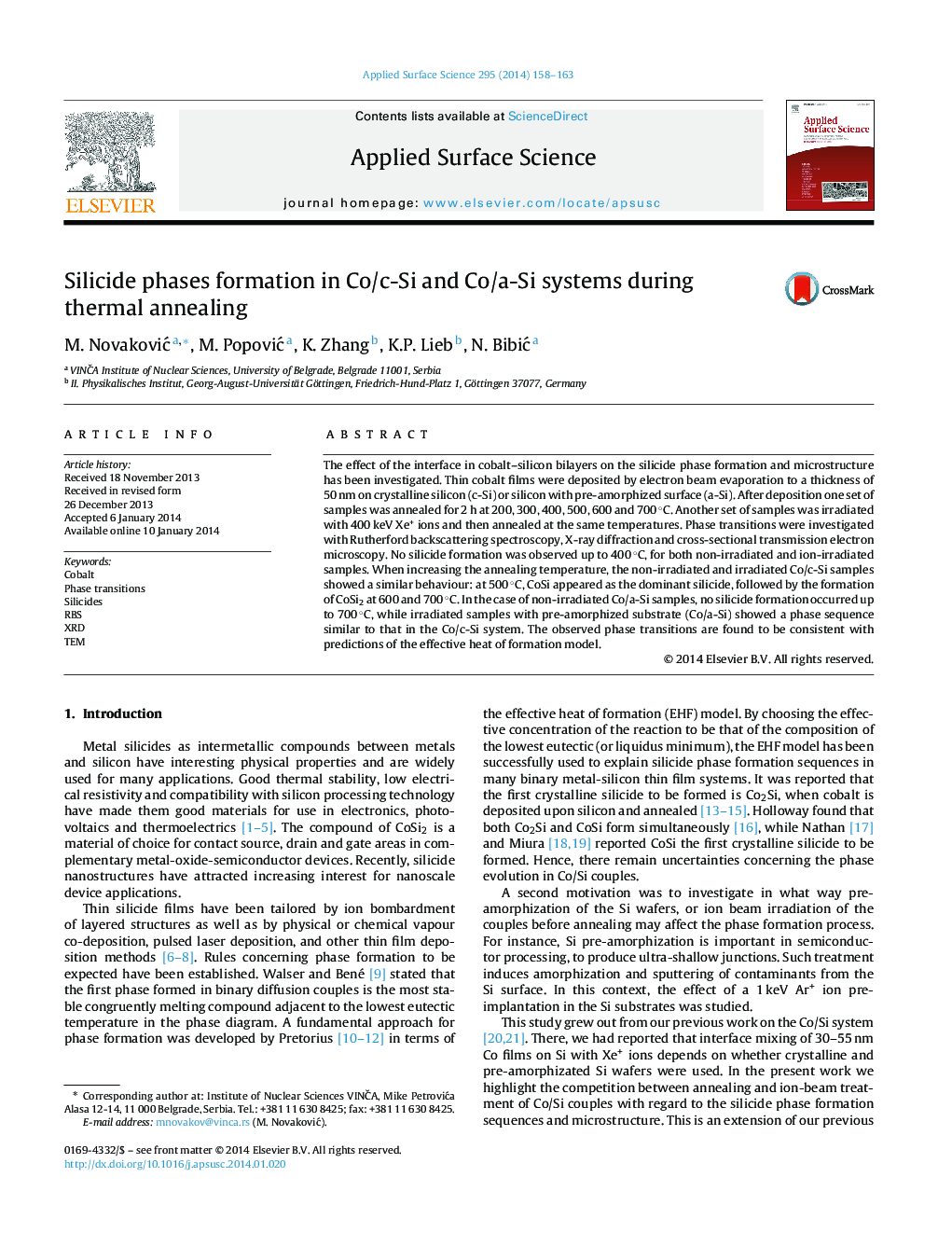| Article ID | Journal | Published Year | Pages | File Type |
|---|---|---|---|---|
| 5358745 | Applied Surface Science | 2014 | 6 Pages |
â¢Silicide phases formation in Co/Si system during annealing was investigated.â¢Thin Co films were deposited on crystalline or pre-amorphized Si wafers.â¢Argon ions generate damage region which represents diffusion barrier.â¢The phase sequence depends on the concentration of the reacting species.â¢The observed phase transitions are consistent with predictions of EHF model.
The effect of the interface in cobalt-silicon bilayers on the silicide phase formation and microstructure has been investigated. Thin cobalt films were deposited by electron beam evaporation to a thickness of 50 nm on crystalline silicon (c-Si) or silicon with pre-amorphized surface (a-Si). After deposition one set of samples was annealed for 2 h at 200, 300, 400, 500, 600 and 700 °C. Another set of samples was irradiated with 400 keV Xe+ ions and then annealed at the same temperatures. Phase transitions were investigated with Rutherford backscattering spectroscopy, X-ray diffraction and cross-sectional transmission electron microscopy. No silicide formation was observed up to 400 °C, for both non-irradiated and ion-irradiated samples. When increasing the annealing temperature, the non-irradiated and irradiated Co/c-Si samples showed a similar behaviour: at 500 °C, CoSi appeared as the dominant silicide, followed by the formation of CoSi2 at 600 and 700 °C. In the case of non-irradiated Co/a-Si samples, no silicide formation occurred up to 700 °C, while irradiated samples with pre-amorphized substrate (Co/a-Si) showed a phase sequence similar to that in the Co/c-Si system. The observed phase transitions are found to be consistent with predictions of the effective heat of formation model.
